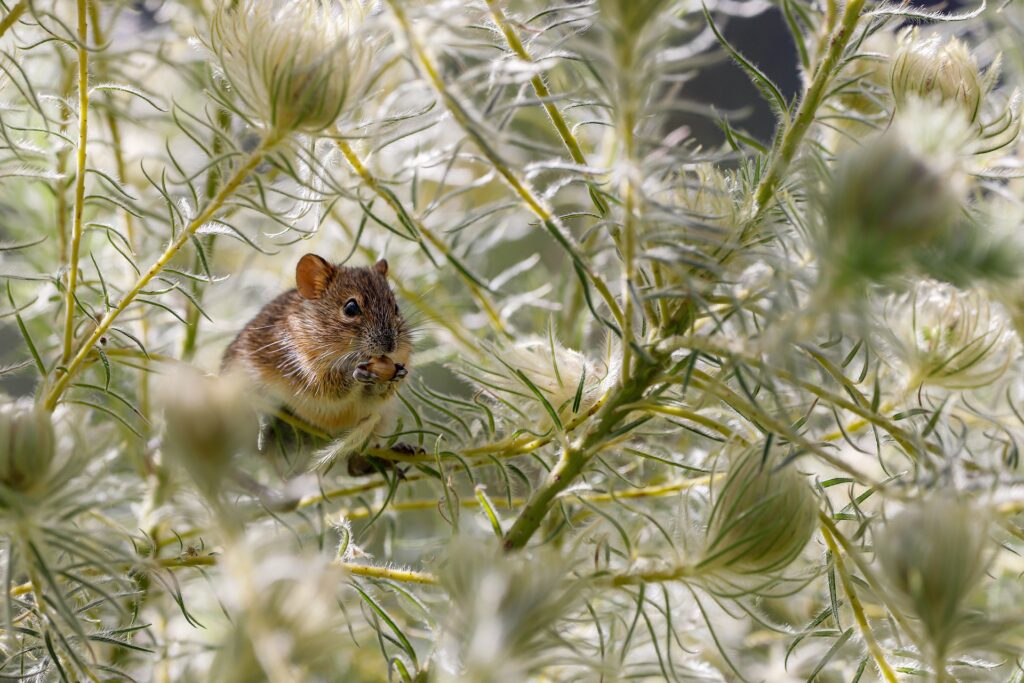House mice might not sound like the scariest pests around but they can cause issues around the home, contaminate food and quickly become a large infestation. You can learn to recognize the telltale signs of a mouse infestation in the house. If you think you have an infestation, call Aptive right away for effective rodent control.
Wondering if you have mice in your home?
Whether you’re reading this to be cautious or because you think you might have mice in your home, it’s important to learn about the signs of an infestation.
Of course, the most obvious signal of a mouse infestation is seeing a mouse. Mice are nocturnal, but that doesn’t mean they’ll never venture out in the day. If you’ve seen a mouse scurrying across the floor or found a dead one in the cupboard, it’s time to develop a plan for controlling the rest of the infestation.
Understanding what to look for and where to look for it will help you identify a problem at an earlier stage and take actions to control it.
How to Identify the Signs of a Mouse Infestation
1. Mouse droppings
Mouse droppings are one of the most obvious signs that pests have moved into your house. Mouse droppings are tiny pellets (like grains of rice) that will often be clustered in areas near the nest. While the droppings could be scattered around a room or home, it’s a good idea to start searching for the nest in the area with the most droppings.
Mouse droppings are smaller than rat droppings—only a few millimeters in length. They’re also pointed at both ends. Newer droppings will appear shiny and dark while older droppings turn gray and dried out.
Even if the droppings don’t signal the location of the nest, they likely signal a heavily visited area of the house.
2. Gnaw/scratch marks
Another clearly visible sign of mice (and another sign of a frequently traveled area) is a collection of bite marks. Mice can gnaw holes in wood, paper, upholstery and plastic. You might find gnaw marks on furniture, walls and food containers.
Unfortunately, much of the gnawing in the early stages of an infestation might take place in the walls or under floorboards as the mice build nests. They can severely damage wiring and cause problems that require major repairs to fix.
Sometimes, the scratching and gnawing sounds can become noticeable at night, when mice are more active and there is less background noise. If you hear strange scratching or tapping sounds that seem to be coming from behind walls or in an attic, you might be hearing rodent activity in your home.
3. Runaways
Bite marks are only one way of identifying a mouse’s common runways. Mice can leave dirty, oily marks along the edge of a wall or tiny footprints on the floor. A flashlight can help you search along the edges of walls and in more hidden areas for tracks.
One reason mice follow paths along walls is their weak eyesight. They use walls as guides to navigate around a room, often following the same paths and making their movements fairly predictable.
Mice are excellent climbers and can reach surprisingly inaccessible areas. Searching for a mouse’s nest can be extremely difficult. Since they favor hollow areas within walls, ceilings and other parts of buildings, you might not be able to access the nest at all. And finding the rodent’s access point can be even harder.
Mouse holes can be quite small—as tiny as 1/4 inch in diameter—not at all like the ones you’ve seen in cartoons. Entrance points can simply be a gap in a vent or a crack at the edge of a floorboard.
Pet owners might have an advantage when searching for mice. If you have a cat or dog and notice them sniffing or pawing at an unusual area of the room, they might be attracted by the smell of mice.
4. Urine smell and stains
Mice urine gives off a musty, stale smell that’s similar to ammonia. With multiple rodents, the smell can quickly become noticeable and might linger after the pests have been removed.
It could be difficult to pinpoint the location of the smell, especially in a large room. Mice commonly build nests in walls, cupboards, attics and other out-of-the-way areas. You can start by checking spaces that are mostly hidden from view. As you search, be on the lookout for damaged food packages, trails of crumbs, stains and holes.
5. Damaged objects or food packaging
If you notice torn or chewed boxes of food in the pantry, or gnawed furniture upholstery, you might have found signs of a mouse building a nest. Mice use these materials as well as other sources of paper, cardboard, fabric and similar materials (even wiring!) to build their nests. Look closely for trails and droppings once you’ve found this kind of damage.
6. Grease Marks as Signs of Mice
One subtle indicator of a mouse problem in your house is the presence of grease marks. Mice have oily fur and as they repeatedly follow the same paths along walls and in small passageways, they leave behind dark, greasy trails. These marks are often found along baseboards, near entry points, or in less frequented areas of the home like behind appliances or in basements. If you notice these telltale smudges, it’s a strong sign that mice have established routes through your living space.
Call Aptive Environmental for Pest Control
Don’t take the signs of a mouse infestation lightly. These pests might seem harmless but they can cause serious damage to home and valuables. Call the experts at your local Aptive Environmental branch as soon as you find evidence of rodents. Our professionals will thoroughly inspect your home and create a custom pest control plan. Using professional and effective methods, Aptive is ready to control rodents and other pests to give you peace of mind. Call today for a free quote.









